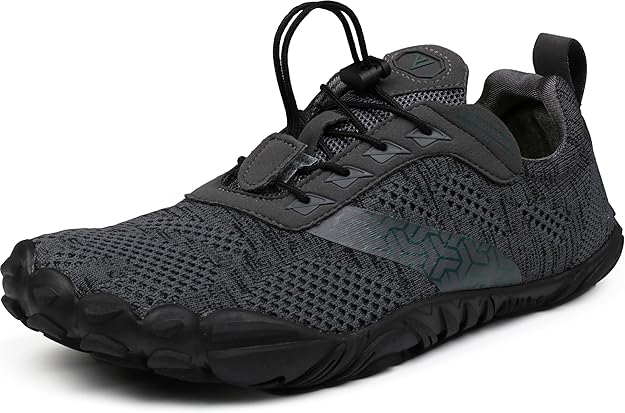A Comparison of WHITIN Barefoot Shoes vs. Xero Shoes HFS
Glacier National Park is a hiker’s paradise with its stunning landscapes, diverse wildlife, and challenging trails. For hikers preparing to tackle the rugged terrain of Glacier National Park, choosing the right footwear is essential. Two popular options for barefoot shoes are the WHITIN Barefoot Shoes and Xero Shoes HFS. In this blog post, we will compare the two brands to help you make an informed decision for your hiking adventure.
Comfort
WHITIN Barefoot Shoes are known for their lightweight and flexible design, providing a barefoot feel while still offering some protection from rocks and debris. The shoes have a wide toe box, allowing your toes to splay naturally, which can be beneficial for hikers over 50 with foot issues. However, some users have reported that the shoes run narrow, so it is important to try them on before purchasing.
Xero Shoes HFS, on the other hand, offer a snug fit with a secure lacing system that keeps the shoes in place during challenging hikes. The shoes have a slightly thicker sole compared to WHITIN Barefoot Shoes, providing more cushioning for long hikes. However, some users have found the shoes to be too stiff and lacking in flexibility.
Weight
WHITIN Barefoot Shoes are incredibly lightweight, making them ideal for fast-packing and long-distance hikes. The minimalistic design reduces fatigue on your feet and legs, allowing you to cover more ground with ease. However, the thin sole may not provide enough protection for rough terrain, so it is important to choose your trails wisely.
Xero Shoes HFS are slightly heavier than WHITIN Barefoot Shoes due to the thicker sole and additional cushioning. While the extra weight may be noticeable on longer hikes, the added protection can be beneficial for rocky trails in Glacier National Park. It is essential to find a balance between weight and protection based on the type of terrain you will be hiking on.
Grip
WHITIN Barefoot Shoes feature a minimalist tread pattern that provides excellent grip on dry trails and rocky terrain. The flexible sole allows for better ground feel, helping you navigate tricky sections with ease. However, the lack of aggressive lugs may be a drawback on wet or muddy trails, so it is important to be cautious in challenging conditions.
Xero Shoes HFS have a more pronounced tread pattern with multi-directional lugs that offer superior traction on a variety of surfaces. The durable rubber outsole provides excellent grip in wet conditions, making it a reliable choice for hikers exploring Glacier National Park‘s diverse terrain. However, some users have found the lugs to be too aggressive, causing discomfort on smoother trails.
Durability
WHITIN Barefoot Shoes are made with high-quality materials that are designed to withstand the rigors of hiking. The shoes are durable and long-lasting, making them a worthwhile investment for avid hikers. However, some users have reported issues with the stitching coming loose after extended use, so it is important to inspect the shoes regularly for signs of wear and tear.
Xero Shoes HFS are built to last with a tough rubber outsole that can handle rough terrain without wearing down quickly. The shoes are made from durable materials that are designed to withstand the elements, ensuring that they will hold up well on long hikes in Glacier National Park. However, some users have experienced delamination issues with the sole separating from the upper, so it is important to properly care for your shoes to maximize their lifespan.
Final Recommendation
In conclusion, both WHITIN Barefoot Shoes and Xero Shoes HFS offer unique features that cater to different preferences and hiking styles. For hikers looking for a lightweight and flexible shoe that provides a barefoot feel, WHITIN Barefoot Shoes are a great option. They are ideal for fast-packing and long-distance hikes, offering comfort and agility on the trail.
On the other hand, Xero Shoes HFS are a reliable choice for hikers seeking a more protective and durable shoe with superior traction. The thicker sole and aggressive tread pattern make them well-suited for challenging terrain in Glacier National Park, providing stability and support on rocky trails.
Ultimately, the best choice comes down to personal preference and the type of hiking you plan to do. It is essential to consider factors such as comfort, weight, grip, and durability when selecting footwear for your hiking adventure. Try on both pairs of shoes and test them out on different terrains to see which one feels best for your feet.
As a hiker over 50, it is important to prioritize comfort and support to prevent injuries and ensure an enjoyable hiking experience. Consider orthotic inserts or custom insoles to provide additional cushioning and arch support for your feet. Take breaks and stretch regularly to avoid muscle fatigue and joint pain on long hikes.
Before embarking on your hiking adventure in Glacier National Park, take the time to break in your new shoes and ensure they fit comfortably. Properly care for your footwear by cleaning them regularly and storing them in a cool, dry place to maintain their quality and longevity. Remember to listen to your body and rest when needed to prevent overexertion and injury on the trail.
In the end, the most important thing is to enjoy the journey and immerse yourself in the beauty of Glacier National Park. Happy hiking!
Want more gear insights? Explore our complete list of trail-tested gear in the Gear Reviews section.
This post contains affiliate links. As an Amazon Associate, we earn from qualifying purchases.
#Comparison #WHITIN #Barefoot #Shoes #Xero #Shoes #HFS
Related
Discover more from Gear Up!
Subscribe to get the latest posts sent to your email.




